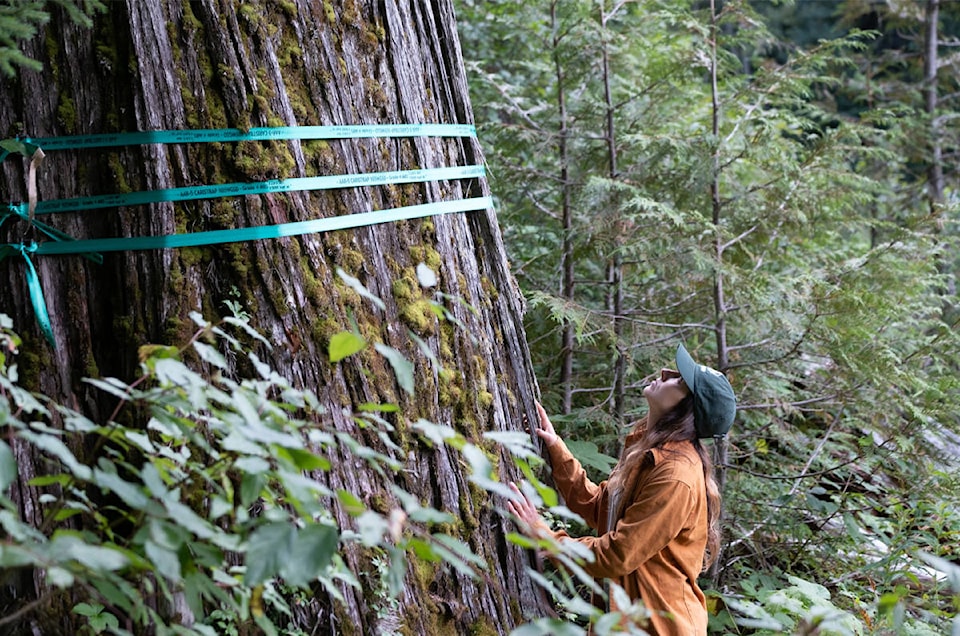Dear editor,
Please see below a response regarding Argonaut, caribou, and old growth.
Caribou will use recently logged areas to access lichen on fallen limbs and trees, but only until they are buried in the next heavy snowfall. Tree lichens only grow in mature or old forests. Logging not only eliminates the caribou’s winter food source for at least 80-100 years, but puts them at greater risk of predation.
READ MORE: Province halts logging north of Revelstoke over caribou concerns
Mountain caribou have adapted to avoid predators by living in small groups and spreading themselves out across the landscape in old growth ecosystems and migrating elevationally to avoid predators and capitalize on food sources.
In early winter they are in low elevation old growth cedar hemlock stands where weather hearty foods like Falsebox can be found.
In late winter, they move up into old Engelmann spruce-Subalpine fir where they use the deep snowpack to access tree lichens.
Putting logging roads and cutblocks throughout their habitat brings in species that are adapted to young forests like elk, moose and deer.
This in turn, brings in predators that would have never been there before.
We have fundamentally transformed these ecosystems through logging and other human activities. Due to logging there is nearly three times more young forest in the Revelstoke-Shuswap than under historic natural disturbance regimes.
In the larger inland temperate rainforest region 27 per cent of the forested landscape is made up of cutblocks.
It’s well documented that as industrial disturbances like logging increase, caribou populations plummet.
There is no meaningful legislation protecting old growth forests, but there are protections for caribou.
Expanding these protections into the future will be critical to the health of these forests and species like goshawk, fishers, wolverines, grizzly bears and flying squirrels.
Maintaining large tracts of old growth forests in places like Argonaut Creek is the most effective way to reduce predation risk and provide forage opportunities for caribou and habitat for old growth reliant species.
The old dogma about old growth forests being carbon emitters is largely false. Old growth forests and in particular Interior Cedar Hemlocks of the inland temperate rainforest are incredibly important for carbon. These forests play a critical role in carbon storage and sequestration.
READ MORE: North Columbia Environmental Society votes in favour of joining Wildsight
One UNBC study from the Inland Temperate Rainforest (ITR) in the Robson Valley found that total forest carbon storage in ITR forests was similar to Coastal rainforests, which are considered to be amongst the most carbon rich forests in the world. The study also found that once clearcut these forests lose nearly four-fifths of their carbon. Much of that carbon is stored in living trees but also large downed trees, and soils which are disturbed or removed once logged.Landscapes dominated by intact mature and old forests often store several times as much carbon as intensively managed logged forest landscapes.
Beyond carbon, old growth forests are critical for water, for caribou, flying squirrels, bull-trout, lichens, birds and us. The old growth forests of the inland temperate rainforest are non-renewable because they have taken hundreds, if not thousands of years to develop, and these forests often produce their own unique micro climates.
As the research of Dr. Suzanne Simard’s research shows, in these primary forests, there’s complex partnerships happening among all of the forest parts, there’s competition, there’s negotiation and there’s symbiotic relationship among trees, plants and fungi which form partnerships to help share water and nutrients. You can remove some of the parts of a forest and it will survive, unfortunately much of the logging and forestry we do in B.C. removes all of the parts.
It doesn’t have to be this way. Old growth forests are worth more standing than they are logged. Places like Argonaut Creek deserve protection and for far too long these forests have only been valued for timber production. It’s time for some leadership from the province. It’s time for our ecosystems to be valued, it’s time to stop logging our old and nonrenewable globally unique forests.
For the wild,
Eddie Petryshen
Conservation Specialist
Wildsight
@RevelstokeRevue
editor@revelstoketimesreview.com
Like us on Facebook and follow us on Twitter.
